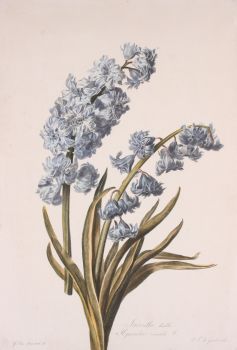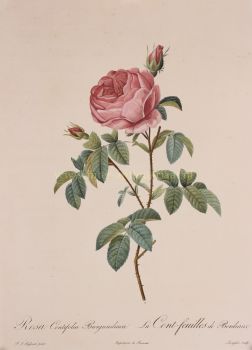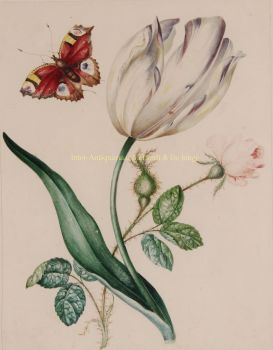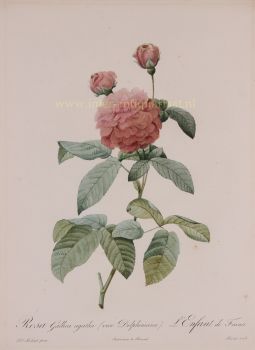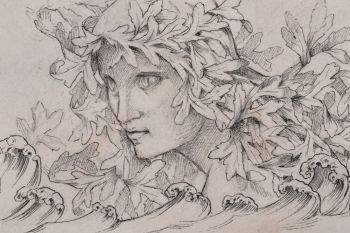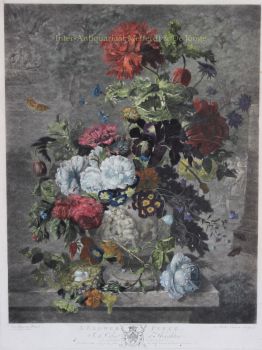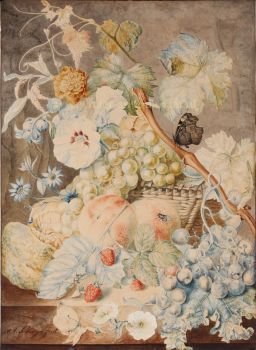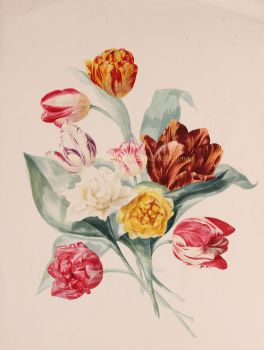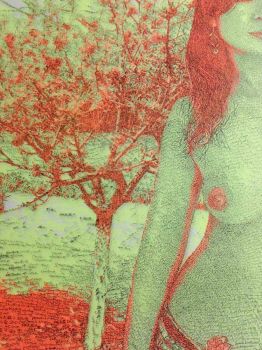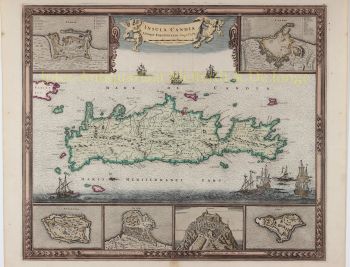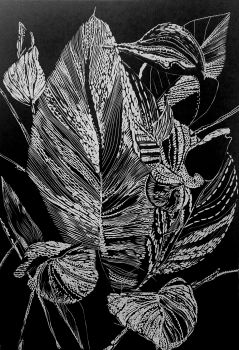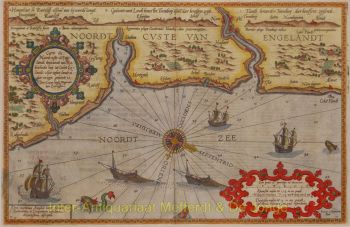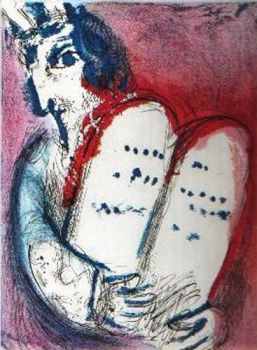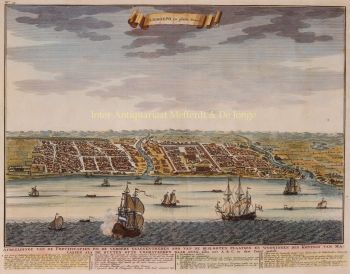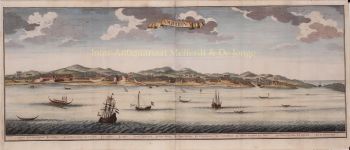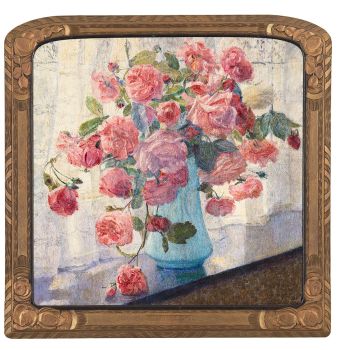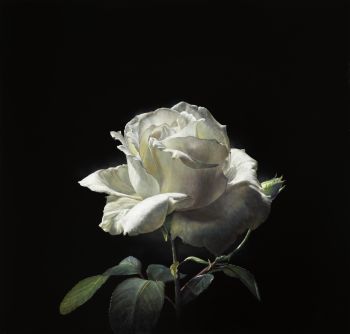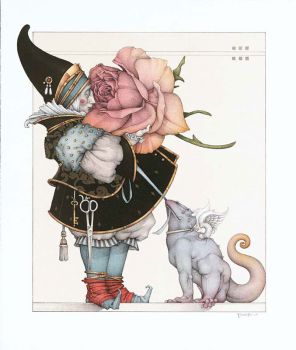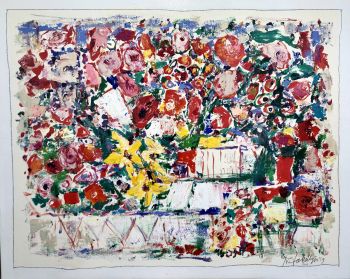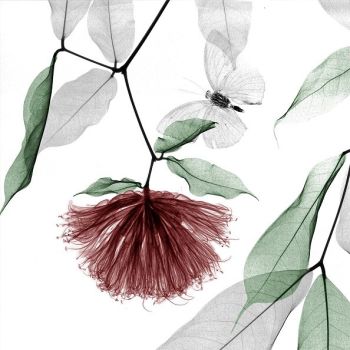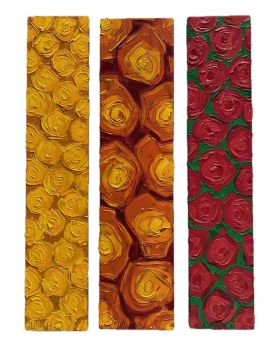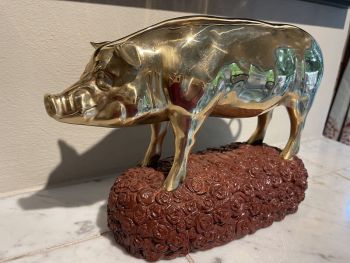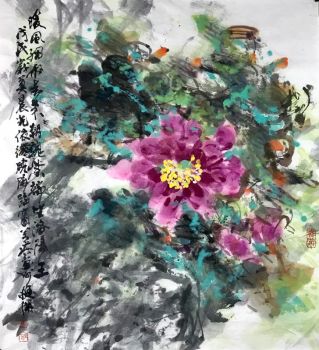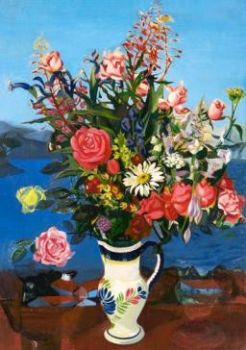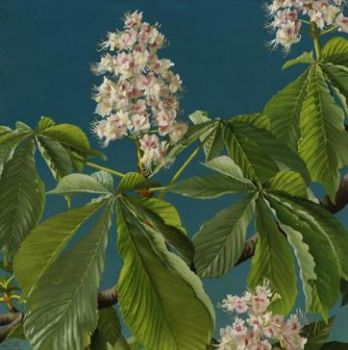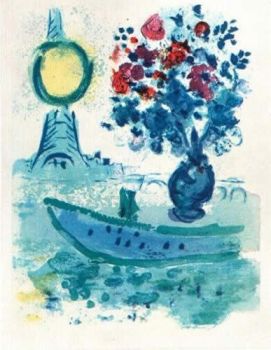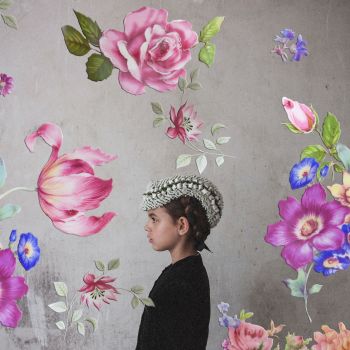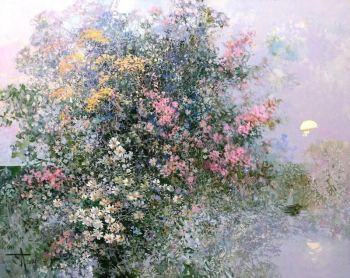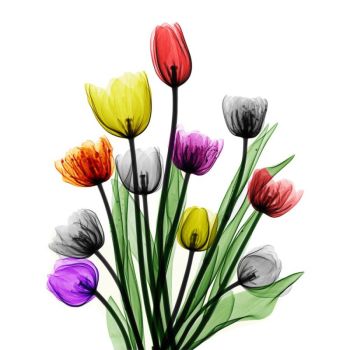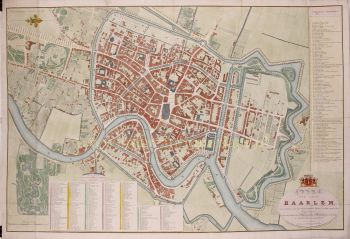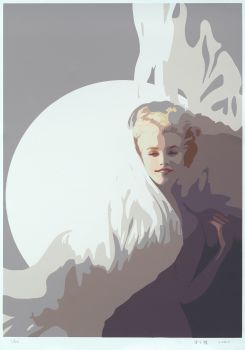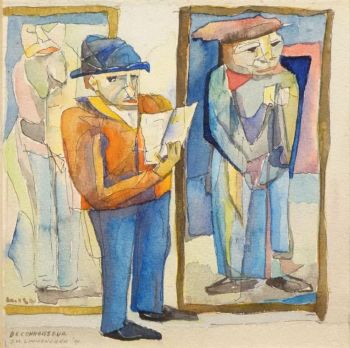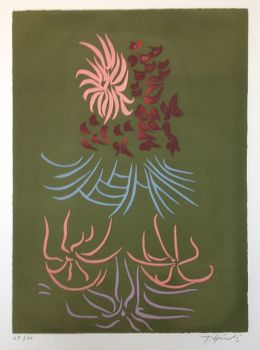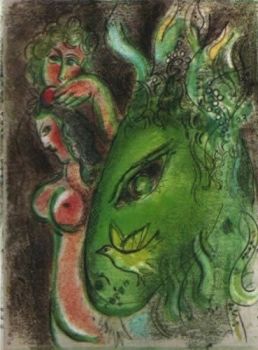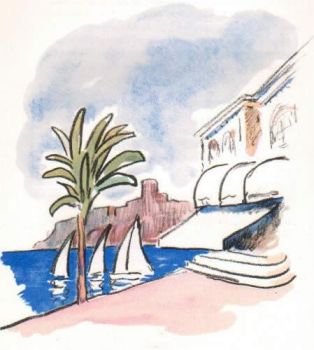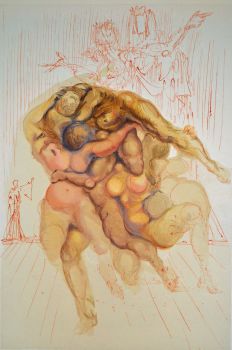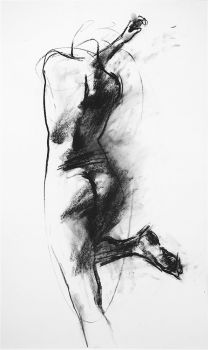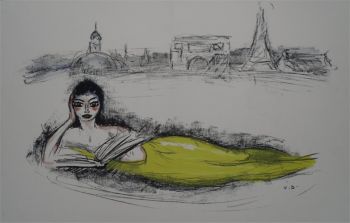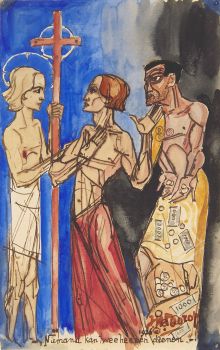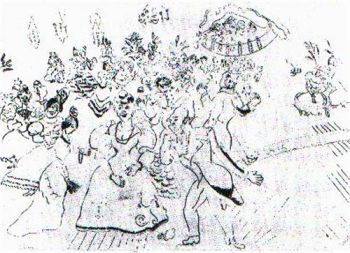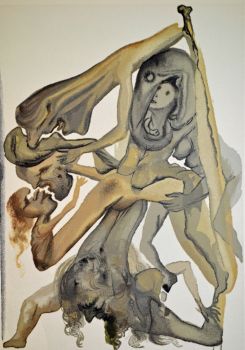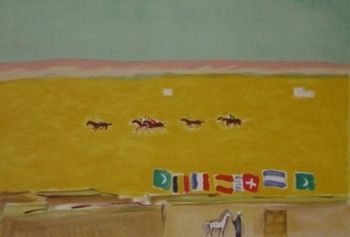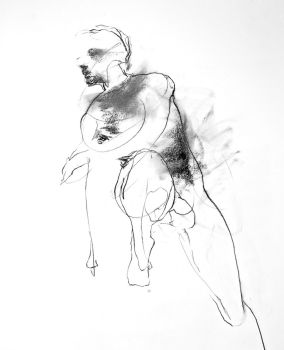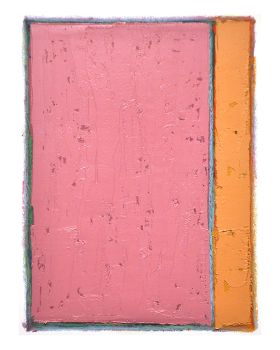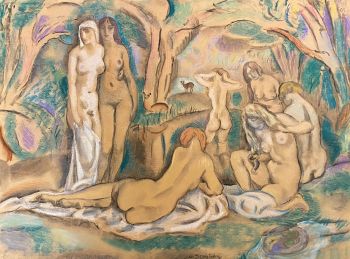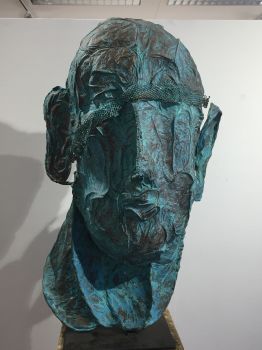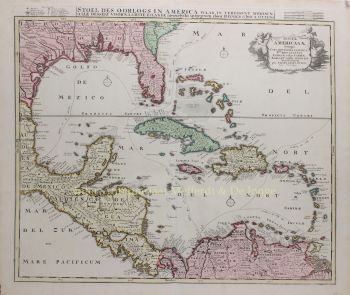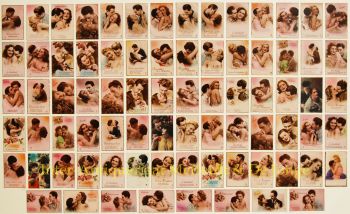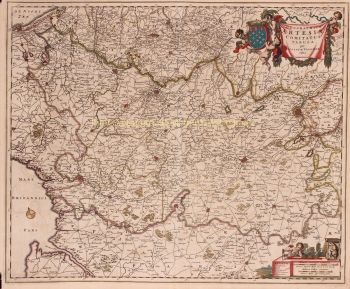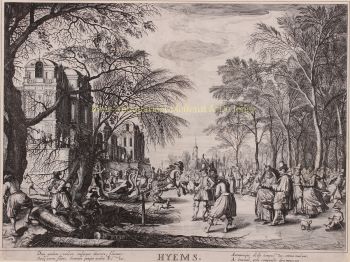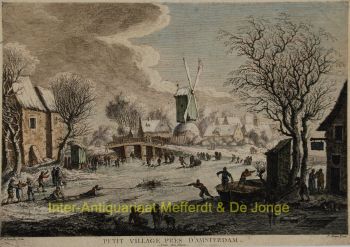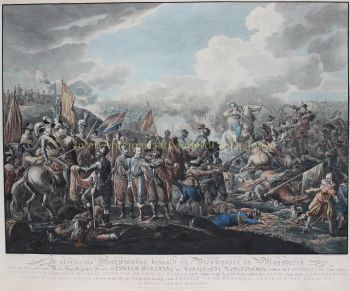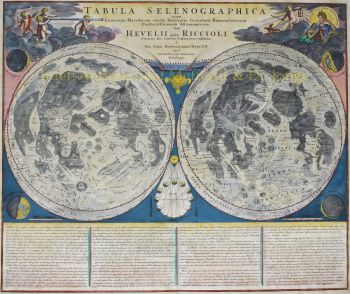Rose 1799
Gerard van Spaendonck
Papel
50 ⨯ 33 cm
€ 1.250
Inter-Antiquariaat Mefferdt & De Jonge
- Sobre la obra de arteRose a cent feuilles [rose with one hundred petalls) or cabbage rose, stippel engraving made by P.F. le Grand after a drawing by Gerard(us) van Spaendonck from the Fleurs dessinées d'après nature, published between 1799 and 1801. With original hand colouring. Size. (print) approx. 50 x 33 cm. The Centifolia roses date from around 1550. Although once regarded as forms of a species, they are now thought most likely to be hybrids between the autumn damask and an alba rose. Centifolias are usually compact bushes with heavy double flowers which often droop under there own weight. The colours varied from white to deep rose red plus striped and spotted varieties. They were much featured in the paintings of the Dutch masters and came to be known as "The rose of the painters". It has fragrant, mid pink, double flowers, the buds of which are covered in fine tubercles or filaments known as moss. Mosses are natural mutations which first occurred on Damask and Centifolia roses. They were very fashionable in the early eighteenth and nineteenth centuries when several hundred forms were raised. Gerard van Spaendonck (1756-1842) studied with decorative painter Willem Jacob Herreyns in Antwerp. In 1769 he moved to Paris, where in 1774 he was appointed miniature painter in the court of Louis XVI. In 1780 he succeeded Madeleine Françoise Basseporte as professor of floral painting at the Jardin des Plantes, and was elected a member of the Académie des beaux-arts shortly afterwards. Van Spaendonck contributed to over fifty works of Les Vélins du Roi, a famous collection of botanical watercolours owned by French royalty. From 1799 to 1801 he published twenty-four plates as part of his Fleurs Dessinees d'apres Nature (Flowers Drawn from Life), which were high-quality engravings for students of floral painting. Today the Fleurs Dessinees d'apres Nature are considered among the best botanical engravings in the world. Stipple engravings with which one is able to differentiate between different tones of gray, turned out to be highly suitable for depicting botanical details, a method that Van Spaendonck also taught his pupil Pierre-Joseph Redouté. Like other famous flower painters, Van Spaendonck was also technically perfect: in oil, watercolour, pen or pencil, on any scale. With attention to every minute detail and elegance and sophistication of the composition, he shows his mastery. Like Jan van Huysum, Van Spaendonck understood the zeitgeist and created flower compositions that matched the taste of the public of around 1800. He combined the traditional Dutch way of representing flowers with French sophistication and good taste. Price: Euro 1.250,-
- Sobre el artista
Gerard era hermano mayor de Cornelis van Spaendonck (1756-1840), quien también era un pintor muy conocido. En los años 1760-1769 estudió en Amberes con el pintor decorativo Willem Herreyns. En 1769 se trasladó a París y en 1774, por mediación de Claude-Henri Watelet, a la edad de 28 años, fue nombrado pintor de miniaturas en la corte de Luis XVI. Expuso por primera vez en 1777. En 1780 sucedió a Françoise Basseporte (1701-1780) como profesor de pintura de flores en el Jardin des Plantes. Poco después fue elegido miembro de la Académie des beaux-arts.
Van Spaendonck pintó tanto al óleo como a la acuarela. Realizó más de cincuenta obras para Vélins du Roi, una renombrada colección de acuarelas botánicas propiedad de la familia real francesa. De 1799 a 1801 publicó 24 láminas de sus Fleurs Dessinées d'après Nature (Flores extraídas del natural); grabados de alta calidad para estudiantes de pintura de flores. Hoy Fleurs dessinées d'après nature es un libro de gran prestigio en el campo de la pintura de flores.
En 1788 Van Spaendonck fue nombrado consejero de la Académie y en 1795 fue uno de los fundadores del Institut de France. En 1804 fue condecorado con la Legión de Honor. Poco después fue ennoblecido por Napoleón Bonaparte. Van Spaendonck murió en 1822 a la edad de 76 años.
En Groeseindstraat 99 en Tilburg, se puede ver una placa donde solía estar el lugar de nacimiento de los hermanos Van Spaendonck. Además del pintor Karel Appel, Gerard van Spaendonck es el único holandés enterrado en Père Lachaise en París. Gerard está justo detrás de la tumba de Chopin.
¿Está interesado en comprar esta obra de arte?
Artwork details
Related artworks
- 1 - 1 / 1
- 1 - 4 / 24
Frères Daum
Daum Nancy – “Paysage Soleil Couchant” vase with two applied handles1900 - 1910
Precio a consultarAntiques Emporium
1 - 4 / 24Rene Rietmeyer
TOKYO - Kudan House - January 2021 #042021
Precio a consultarEuropean Cultural Centre Collection
1 - 4 / 24- 1 - 4 / 12


